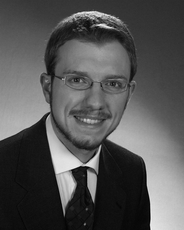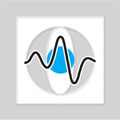
Dr.-Ing. Andreas Fieselmann
Alumnus of the Pattern Recognition Lab of the Friedrich-Alexander-Universität Erlangen-Nürnberg
Mathematical Methods for Perfusion Image Analysis
1. Overview
CT and MR perfusion imaging are used for various clinical applications such as diagnosis of acute stroke, assessment of tumor perfusion or functional imaging of the lungs. There is also current research to use a C-arm CT for perfusion imaging. Perfusion imaging consists of the injection of a contrast bolus and fast repeated scanning, typically at 1 frame per second, of the volume of interest. Thereafter, the image data is analyzed using dedicated mathematical models to compute various perfusion parameters, for example, cerebral blood flow (CBF), cerebral blood volume (CBV) and mean transit time (MTT).
The common methods for perfusion image analysis employ a deconvolution of the arterial input function (AIF). Algebraic deconvolution approaches based on the singular value decomposition (SVD) are very frequently used. These approaches require regularization to obtain numerically stable and physiologically meaningful results. The main focus of this project was to investigate Tikhonov-type regularization methods in the field of pulmonary perfusion image analysis.
This project was in collaboration with the German Cancer Research Center (DKFZ), Division of Medical Physics in Radiology.
2. Publications
M. Salehi Ravesh, A. Fieselmann, F. Risse, G. Brix, W. Schranz, S. Zwick, M. F. Herrmann, and W. Semmler. Quantification of pulmonary perfusion using dynamic contrast-enhanced MRI: comparison of two Tikhonov regularization methods. In: Proc. Annual Scientific Meeting ESMRMB 2008, page 824, Valencia, Spain, 2008.
M. Salehi Ravesh, A. Fieselmann, F. Risse, G. Brix, W. Semmler, and W. Schranz. Quantifizierung der Lungenperfusion mit der Kontrastmittel-unterstützten dynamischen MRT: Vergleich zweier Tikhonov-Regularisierungsmethoden. In: Medizinische Physik 2008, Oldenburg, Germany, 2008. (pdf)
A. Fieselmann, F. Risse, C. Fink, and W. Semmler. A novel method to determine the Tikhonov regularization parameter for pulmonary perfusion quantification with MRI. In: Proc. Joint Annual Meeting ISMRM-ESMRMB 2007, page 2764, Berlin, Germany, 2007. (pdf)




